Although made of bricks, the Ultimate Collector Series (UCS) sets rarely look like ordinary toys, more like huge display pieces. The most famous one these days is the large UCS Millennium Falcon (75192), which until the recent release of the LEGO Colosseum (10276) was the largest set ever released.
Now, you guessed I am a huge Star Wars fan. I do own a few of the recent UCS sets, starting with the Ewok Village (10236), my first set out of the Dark Ages, and most of the sets released after that. Still, it’s not a lot. By a long shot.
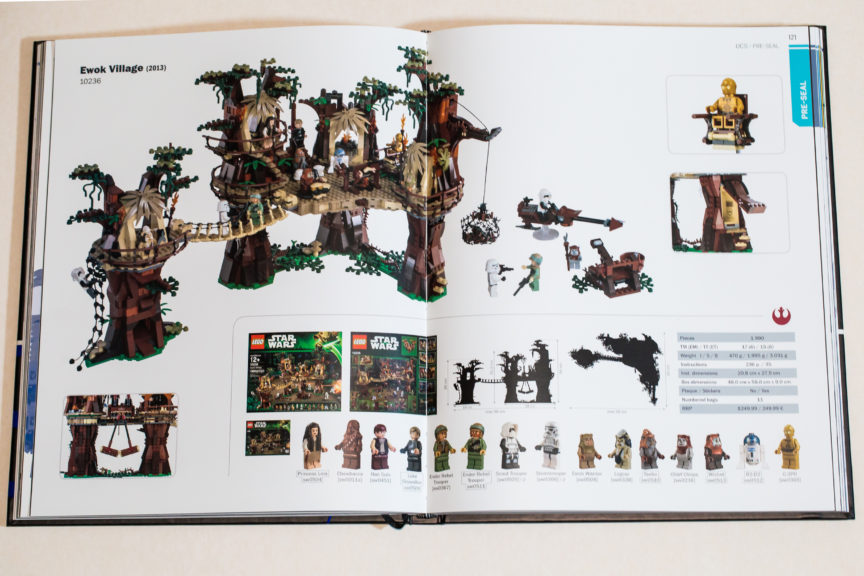
Now in a display room, even if you do not own every UCS set, finally comes something you might want to have which doesn’t require hours of building: the U2-CB book by Rafael López.
The U2-CB book
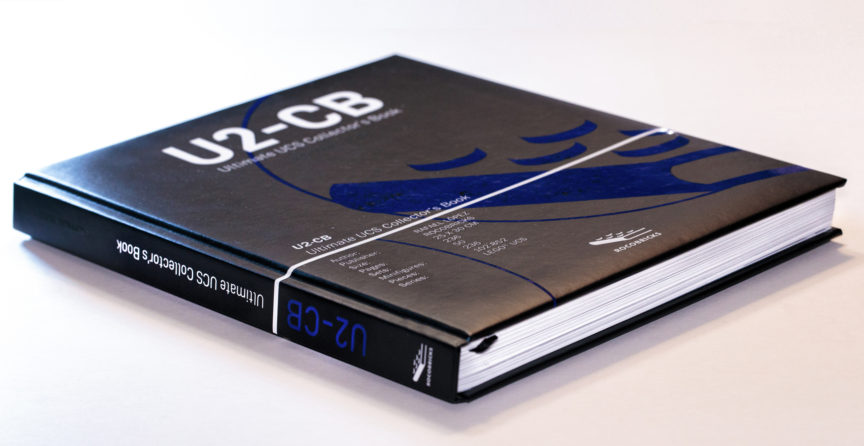
Aesthetically, the padded hardcover of that book perfectly matches the style of the current UCS plaquettes: black background with white font, and a blue sketch of a brick in place of the pictogram of the set. Such detail makes the book really stand out and look classier than all of LEGO visual references. It does give the feeling of a luxury book, one you’d want to protect from scratches, like a UCS set.
I tried here to take a few snapshots of the book, showing how luxurious it looks, but could not give it full justice. It deserves a “lifestyle” picture with a fancy decor. Sadly my house does not match the glory of it (I wonder why? Perhaps because of LEGO sets everywhere? And surely all the DUPLO…)
Judging past the cover: rigor and passion
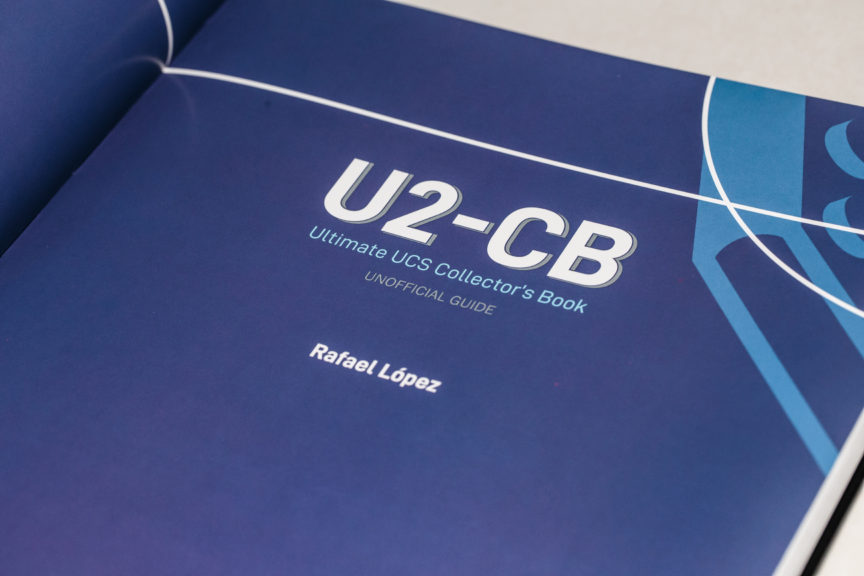
But in reality, some people get books mainly for their contents. About that, there is a note from the editor on page 9: “All the information and data included in this book are the result of knowledge, research, consultation, and compilation of the author and his experience as a collector. Every effort has been made to document and reference all data and facts reported. The images belong to the author’s personal collection.” I believe this says a lot about how the book was created: with rigor and passion. And honestly, this passion helped me appreciate the reading sessions even more.
The author clearly did not get lazy when crafting this book. It is nothing short of an excellent, if not perfect, source of information on these very unique UCS sets. If the usual visual dictionary feels like a high-quality LEGO set (they are admitedly nice books), then this book falls into the “Ultimate Collector Series” category. The UCS of reference books.
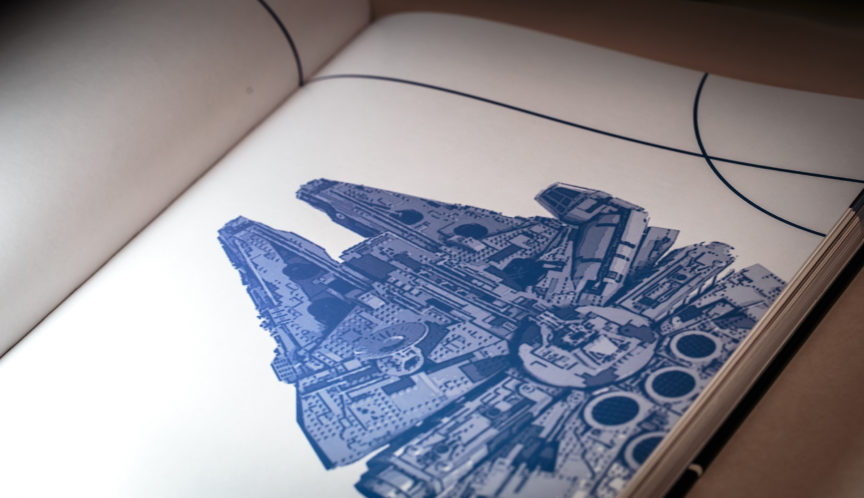
Technically, the book has been very well structured. After a brief introduction, the author provides a detailed explanation of the UCS concept and a few historical notes that illustrate how the products evolved. This is the kind of side information that tells you how knowledgeable an author is.
Throughout these pages you will also find lots of imagery, which often helps better understand the concepts, as well as technical diagrams and the release trends for the UCS line so far. All of this information might be available somewhere on the web (what isn’t nowadays?), but truly, I much prefer getting facts summarized nicely and cleanly bound in a single document by someone who knows his facts.
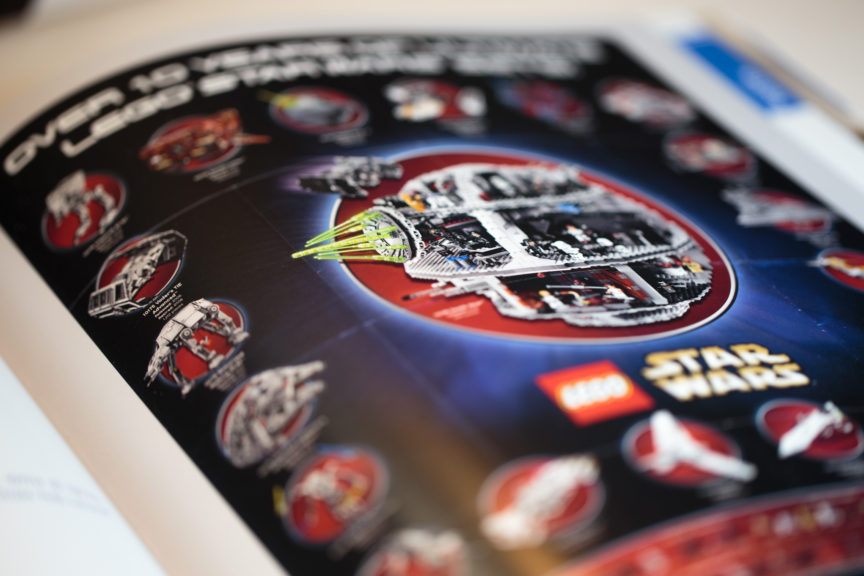
This introductory section not only reflects the complexity of the UCS line, but also gives the proper tone to the reader: this is serious reading. This clearly helped me get cozily into the core of the book, i.e. a listing/description of the sets themselves.
Getting to the core…
This description has been divided into sub-parts/chapters. At that point, one thing comes to mind for the reader, and is clearly explained in the book: the UCS collection is complex. For some reason, TLG has changed the UCS scheme and how they referred to it numerous times . They in fact had not unified the concept until later on. The book clarifies this a bit, starting by listing sets with 4 digits in the LEGO reference number, released between 2000 and 2002.
Then, what the author refers to as “Poster” sets, are the ones displayed on a promotional poster back in 2011, and which excluded those initial sets. I love the fact that this poster is also shown on the pages of that book.
This is followed by the sets released after that famous poster, and then sets which were clearly tagged with a seal “Ultimate Collector Series”. The author categorizes all of these, so the newcomer to the UCS concept gets on track with what belongs to that UCS line. If I had in mind to get the missing UCS sets, this book would be best way to start the hunt.

Each set has a few descriptive pages, based on chronological order of release. There you can find pictures of the sets, boxes, dimension diagrams and a table with technical details. One clever touch: all pictures of boxes, instruction manuals and dimension diagrams are provided at the same scale, and minifigures too.
This is done with what the author calls standardized “spec sheets”. This really helps comparing the sizes of these sets (and perhaps to plan how large a house you need to buy to display them all!) As an engineer, I must admit I absolutely admire the work presented here. It’s like looking at blueprints.
But again, there is more. And this is what set this book apart from typical reference books.
Cherry-on-the-top: details
As mentioned before, the author likes to provide extra layers of information of the sets he describes. This is done at the beginning of each section. Here you will find historical information assorted with a lot of illustrations of the sets and oddities they hold.
It’s something I have yet to see in any guide, and surely not in a condensed form online, so it truly adds value to the book as a unique reference. I strongly encourage readers to dig into these pages as, in my opinion, they are the cherry-on-the-top for this book, and what set it away from a simple reference book.
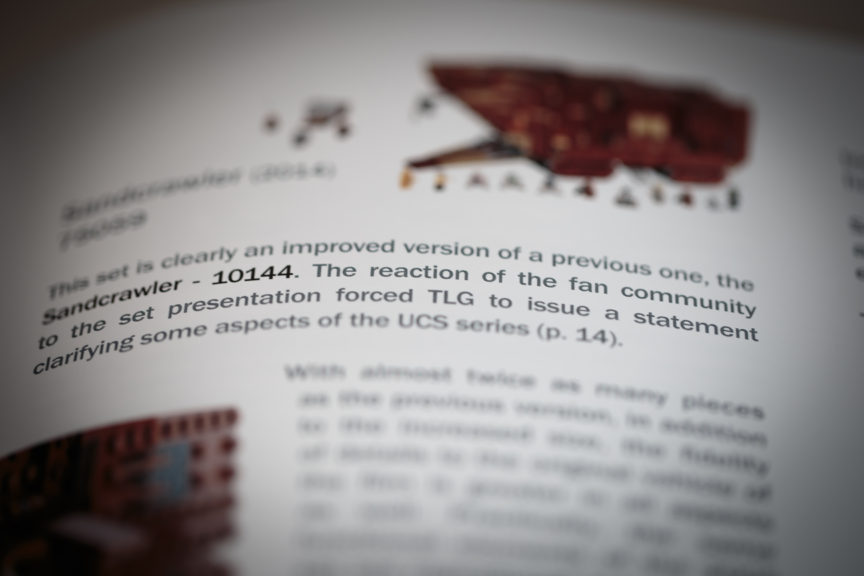
Images here are worth more than a thousand words
What I also appreciate are the pictures provided by the author. These come from his own sets, edited on a white background on the descriptive pages of each set; as a hobby toy photographer myself, I always enjoy seeing a personal touch in a book. It is like a piece of map hand-drawn by an author in a fantasy novel.

And this not only comes from the technical spec sheets, but also throughout the whole book, as imagery pops out seemingly at random: a picture of Han in Carbonite with a small tag: “Han Solo”, or a Darth Vader minifigure at the beginning of a chapter with the corresponding legend. Then, flipping through the pages, artistic shots of some of the sets suddenly appear throughout the pages bring those sets to life – to name a few: half of Darth Maul’s painted face with a low red back light, eye staring at you; a Jawa walking in the sand as seen from the top of the immense Sandcrawler (see below); the shining, vacuum-metalized chrome thruster engine from the Naboo Starfighter; or simply, C3PO floating in the middle of a blank page on his God-throne from the Ewok Village set – all of these shots made me smile like a kid. There we see what effort and passion went into crafting this book.
I am sure the author took delights in writing and assembling these pages. I honestly wished the numerous LEGO visual dictionaries I bought had even just a few shots like these. But then again, this is not an ordinary book: it belongs with the UCS line.
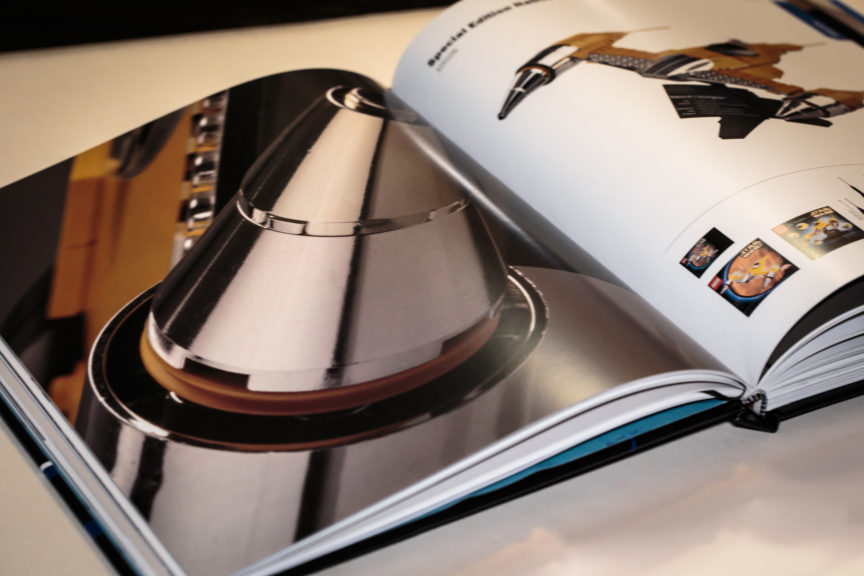
A guide to collectors
For serious collectors, set hunters and avid UCS fans, this is evidently meant as a guide too, as there are added bonuses in the form of annexes at the end of the book. These come in the form of a listing of minifigure appearances in these numerous UCS sets.
There are also pages worth of comparative charts, the latter including number of pieces, minifigs, weight, number of bags (yes, I also appreciate this as I keep and store bags for all my opened sets too!), original retail prices in US dollars and Euros, as well as relative cost of parts (per gram or price). For those wanting to acquire sets or list what they have, the author also supplied a valuable inventory table to fill up as your collection grows (yikes!)
Another nice addition: a UCS collector’s poster, with pictures of UCS sets, very nicely designed. A visual complement to the book.

There are some small things to consider about this book. While it does trace back to the UCS line origins and contains most of the UCS sets to date, the book was prepared earlier in 2020. So it does miss on two more recent sets: the “Master Builder Series” Mos Eisley Cantina (75290) and the character build of The Child (75318).
Of course, the UCS line is growing every 6 months for Star Wars sets alone, even more frequently when considering other franchises; it is impossible to get a dynamically evolving printed edition. But I doubt this would be an issue for anyone.
The U2-CB Book: take-home message
Some conclusive remarks: UCS fans and collectors will surely appreciate the book for what it is, a remarkable work and reference guide to existing UCS sets. It is set apart from typical visual LEGO references not only in the visual aspects, but also the factual details it provides on this particular series of products. Again, I look at it as the UCS of reference books.
The facts:
- The book is published by Rocobricks and authored by Rafael López, himself a UCS collector (he really owns them all!);
- The book is available in two versions: English (ISBN 9788412162837) and Spanish (ISBN 9788412162820);
- The list price is 47 EUR/57 USD;
- It is available in stores in Spain;
- International buyers can get it online at: https://www.rocobricks.es/en/product-category/books/ or Amazon.
Based on my discussions with the author, it appears that the Covid pandemic, Brexit and the very busy Christmas season have complicated global distribution. I wanted to make sure people from different parts of the world could check this out, so none of our readers feels excluded. So here is a list of the best deals currently available to you:
- Germany (45,32 EUR, free national shipping): https://www.amazon.de/U2-CB-Ultimate-UCS-Collectors-Book/dp/8412162838
- Italy (47 EUR, free national shipping): https://www.amazon.it/U2-CB-Ultimate-UCS-Collectors-Book/dp/8412162838
- France (47 EUR, free national shipping): https://www.amazon.fr/U2-CB-Ultimate-UCS-Collectors-Book/dp/8412162838
- Spain (44,65 EUR, free national shipping): https://www.amazon.es/U2-CB-Ultimate-UCS-Collectors-Book/dp/8412162838
- UK, Most affordable shipping option (43GBP shipping included and in stock): https://www.amazon.es/U2-CB-Ultimate-UCS-Collectors-Book/dp/8412162838
- USA (75USD shipping included and in stock): https://www.amazon.es/U2-CB-Ultimate-UCS-Collectors-Book/dp/8412162838
- USA (Spanish version) (60 USD, free shipping): https://www.buscalibre.us/libro-u2-cb-ultimate-ucs-collector-s-book-unofficial-guide/9788412162837/p/53080154
- SOUTH AMERICA (Spanish version (60-75USD): https://www.buscalibre.com.ar/libro-u2-cb-ultimate-ucs-collector-s-book-libro-del-coleccionista-ucs-guia-no-oficial/9788412162820/p/53080155
- WORLDWIDE: It may be back in stock at Book Depository website in a couple weeks (depending on Brexit): https://www.bookdepository.com/U2-CB-Ultimate-UCS-Collectors-Book-L%C3%93PEZ-DOM%C3%8DNGUEZ-RAFAEL/9788412162837
If you readers find out another way of getting this book, please feel free to contact me and I’ll gladly update the list for everyone to see.
In the end, my only regret while reading this book: seeing the latest huge UCS Sandcrawler, which I ran into once in a conference trip in Spain a few years ago but was not allowed to buy (my wife: “our suitcase is too small for it”. She was right, of course, as always).
Yet I now see it again in those pages and it speaks very loudly to me: why, oh why did you not bring me back with you? I am sure those who own some or all of the sets will also feel the same vibe admiring the pages of this book.

DISCLAIMER
I graciously received this book by the author Rafael López and Rocobricks to conduct this review within my role at Brickcentral. My opinion of this book is my own, so as the words written here and the “artsy” pictures of the book and some of its pages. None of the review was influenced by anyone else. I did, however, show a few pages to my wife, especially the ones with the latest UCS Sandcrawler. While she admitted the set looked nice (“a big brown shoe box on treads”, she said), and said the book was very detailed too, she immediately asked me to hide the latter away in fear I would consult it too often. Maybe she’s afraid I’d be tempted for a quick back-and-forth trip to Spain for a missed UCS Sandcrawler? Who knows…


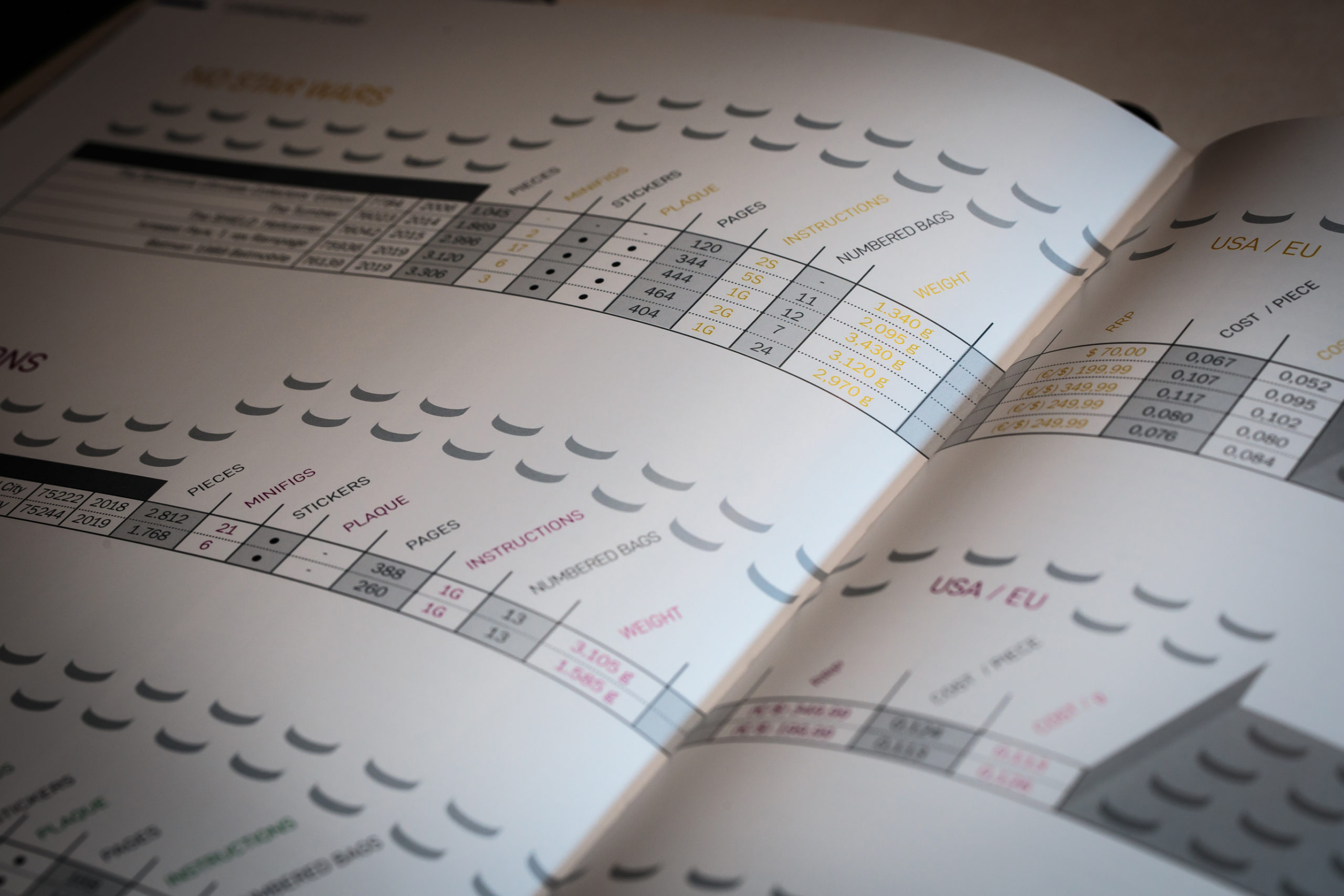
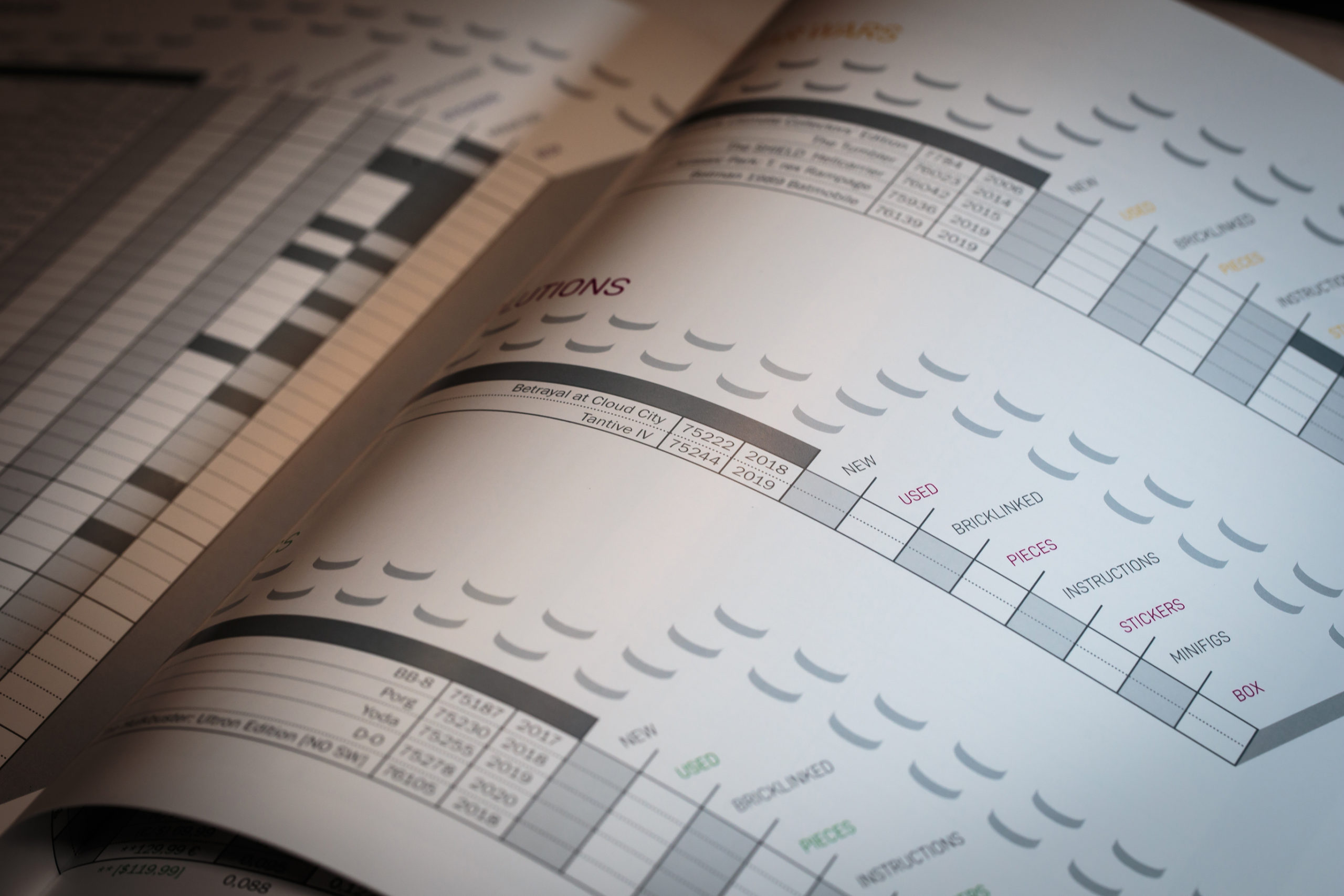
One Comment Add yours